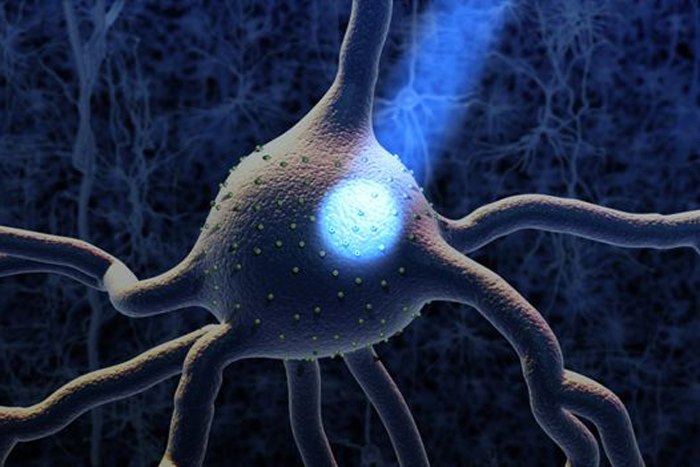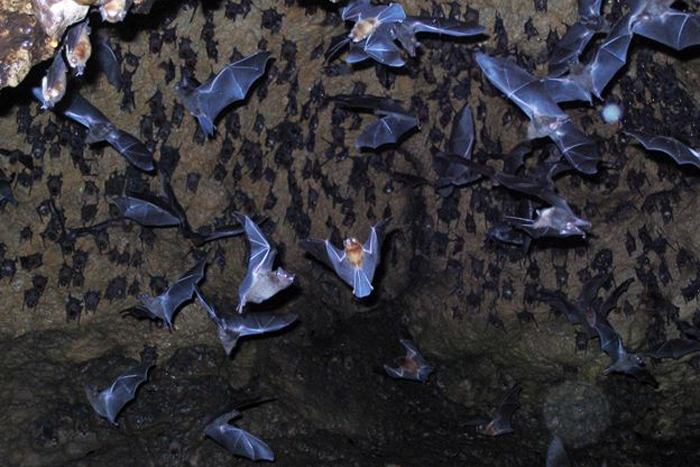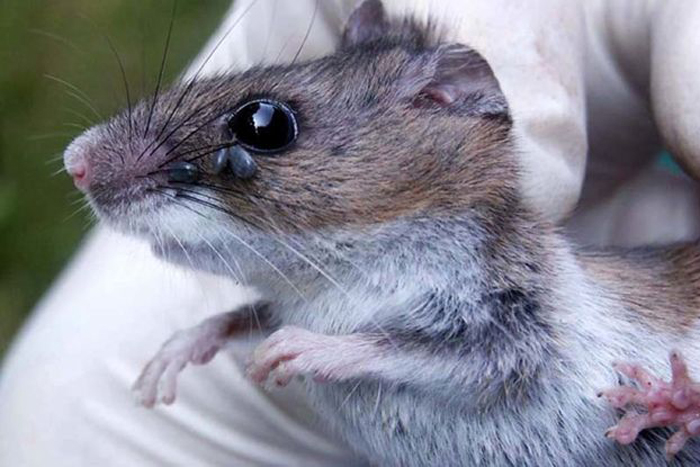10 Surprising Ways that Biodiversity Benefits the Economy
Extremophile kick-starts new industries:

After the discovery of a bacterium that lives at extremely high temperatures in Yellowstone National Park’s hot springs, scientists extracted a heat-resistant enzyme that helps copy DNA. This enzyme was used to develop a lab technique for rapidly duplicating DNA with the help of repeated heating and cooling cycles. Known as the polymerase chain reaction (PCR), this technique enables DNA fingerprinting, an essential forensics tool, and much of the biotechnology industry, worth more than $95 billion today.
Unlikely microbes advance brain research:

By illuminating light-sensitive proteins that have been inserted into a brain neuron (depicted here), scientists are able to turn on the neuron; the technique is called optogenetics. Scientists in laboratories all over the world use optogenetics to turn target neurons on and off, thus helping to identify the neurons’ functions. One goal is appropriate treatment targets for brain diseases ) — including schizophrenia and Parkinson’s, disorders such as anxiety, and traumatic brain injuries — which cumulatively cost the U.S. many billions of dollars annually. The development of optogenetics was made possible by earlier research on light-sensitive proteins in two microbes that don’t even have brains: an extremophile from super salty Saharan lakes and a common algae. Learn more here, here and here.
Geckos inspire more than car insurance:

Geckos can scamper up vertical walls and across ceilings because their feet have billions of tiny fibers that contact surfaces closely enough to form intermolecular bonds with them. The cumulative power of these fibers holds the foot in place. Made from tiny synthetic hairs that function like gecko bristles, gecko-inspired adhesives offer up to 100 times the gecko’s gripping power, and can be easily attached and detached from surfaces if manipulated correctly. Such adhesives may be used to improve medical equipment, climbing shoes and cell phones.
Walking in the gecko’s footsteps:

Wall-climbing robots are specially designed to walk and climb with gecko-inspired adhesives affixed to the bottom of their feet so that they can easily attach and detach their feet as they move. Potential applications for such robots include climbing on space structures, positioning sensors on high walls for monitoring air pollution, participating in search-and-rescue missions and finding cracks in bridges. Learn more here. Robots inspired by animals and insects represent the next wave of robotics. Why? Because of new ultra-sensitive tools for analyzing how organisms move and new materials for building bio-inspired robots that are resilient and tough enough to perform under real-world conditions.
Preventing bees from buzzing off:

Honeybees pollinate about $20 billion worth of U.S. farm products. But honeybee populations are threatened by factors including colony collapse disorder--the sudden disappearance and death of adults from hives. Marla Spivak of the University of Minnesota, shown here with a bee beard (Don’t try this at home!), is researching bee health to help combat these declines and “get bees back on their own six feet.” Learn more here.
Feeding and fueling the world:

Photosynthesizing organisms use sunlight and CO2 to produce sugars and oxygen. But photosynthesis is relatively inefficient. Nevertheless, some species of plants, algae and bacteria have evolved efficiency-boosting mechanisms that reduce energy loss or enhance CO2 delivery to cells during photosynthesis. Scientists are working to improve, combine and engineer such mechanisms. Their goal: to confer efficiency-boosting mechanisms on important crops to increase food production or possibly biofuels production.
Bats are farmers’ friends:

By eating insects, bats annually reduce pesticide costs for U.S. farmers by more than $22 billion. Bats are also essential pollinators of commercially valuable crops, including bananas. But a new, fast-spreading incurable disease — white nose syndrome — threatens the survival of some species. Researchers are racing to identify factors that promote disease susceptibility — information that could support management efforts. (Also note that the development of sonar for ships and ultrasound was partly inspired by bat echolocation--the navigation system used by most bats to find and follow quick-moving insect prey at night without crashing into trees or buildings.) Learn more here.
Get the world’s most fascinating discoveries delivered straight to your inbox.
We need even “pesky” insects:

Research shows that, through evolution, evening primroses grown in insecticide-treated plots quickly lose defensive traits, such as their production of insect-deterring chemicals, which they no longer need in the absence of insects. The message: A loss of insects may yield unwelcome consequences such as the rapid loss of traits we value in plants, such as their good taste, which may have originally evolved to fight insects. Learn more here.
Are species losses sickening?

Studies show that loss of biodiversity harms the health of humans and other animals. Such studies yield information that is important for predicting and controlling many infectious diseases. For example, Lyme disease, primarily carried by white-footed mice, is transmitted to humans by ticks that become infected after biting a carrier. Studies indicate that when forests are degraded, mice thrive in the absence of their predators (which have disappeared from degraded forests). Furthermore, tick-eating opossums also vanish from degraded forests, so encounters between people and infected ticks become more likely. With about 300,000 Lyme diagnoses in the U.S. annually, the disease costs the nation billions of dollars annually. Learn more here and here.
Fighting invaders:

Since fire ants were introduced into the U.S. in the 1930s, they have been wreaking havoc. They now annually cause $5 billion in damages to agricultural and recreational resources by damaging farming fields and equipment with their nests and injuring people and animals with their painful stings. Because standard insecticides have not stopped them, researchers are taking new approaches. They recently identified genes that underlie social structure and communication within fire ant colonies. This will allow for the development of tools that would help destroy fire ant colonies by disrupting the chemical signals these insects use to communicate. Learn more here.



